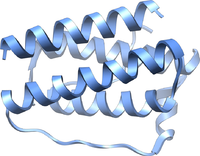
Genetic, metabolic and immunological features of cancers with NRF2 addiction
Sign Up to like & getrecommendations! Published in 2022 at "FEBS Letters"
DOI: 10.1002/1873-3468.14458
Abstract: Nuclear factor erythroid‐derived 2‐like 2 (NRF2) is a master transcription factor that coordinately regulates the expression of many cytoprotective genes and plays a central role in defense mechanisms against oxidative and electrophilic insults. Although increased… read more here.
Keywords: cancer cells; metabolic immunological; nrf2 addiction; genetic metabolic ... See more keywords

FEN1 promotes tumor progression and confers cisplatin resistance in non‐small‐cell lung cancer
Sign Up to like & getrecommendations! Published in 2017 at "Molecular Oncology"
DOI: 10.1002/1878-0261.12118
Abstract: Lung cancer is one of the leading causes of cancer mortality worldwide. The therapeutic effect of chemotherapy is limited due to the resistance of cancer cells, which remains a challenge in cancer therapeutics. In this… read more here.
Keywords: fen1; lung cancer; resistance; cancer cells ... See more keywords

A drug‐repositioning screen for primary pancreatic ductal adenocarcinoma cells identifies 6‐thioguanine as an effective therapeutic agent for TPMT‐low cancer cells
Sign Up to like & getrecommendations! Published in 2018 at "Molecular Oncology"
DOI: 10.1002/1878-0261.12364
Abstract: Pancreatic cancer is one of the most difficult cancers to cure due to the lack of early diagnostic tools and effective therapeutic agents. In this study, we aimed to isolate new bioactive compounds that effectively… read more here.
Keywords: therapeutic agent; ductal adenocarcinoma; pancreatic ductal; cancer cells ... See more keywords

Progranulin sustains STAT3 hyper‐activation and oncogenic function in colorectal cancer cells
Sign Up to like & getrecommendations! Published in 2019 at "Molecular Oncology"
DOI: 10.1002/1878-0261.12552
Abstract: Persistent activation of Signal Transducer and Activator of Transcription (STAT)3 occurs in a high percentage of tumors, including colorectal cancer (CRC), thereby contributing to malignant cell proliferation and survival. Although STAT3 is recognized as an… read more here.
Keywords: colorectal cancer; hyper activation; activation; cancer cells ... See more keywords

STAT3‐mediated MLST8 gene expression regulates cap‐dependent translation in cancer cells
Sign Up to like & getrecommendations! Published in 2020 at "Molecular Oncology"
DOI: 10.1002/1878-0261.12735
Abstract: Signal transducer and activator of transcription 3 (STAT3) regulates cell growth, cell survival, angiogenesis, metastasis of cancer cells, and cancer immune evasion by regulating gene expression as a transcription factor. However, the effect of STAT3… read more here.
Keywords: gene expression; translation; expression; cancer cells ... See more keywords

Pericyte‐secreted IGF2 promotes breast cancer brain metastasis formation
Sign Up to like & getrecommendations! Published in 2020 at "Molecular Oncology"
DOI: 10.1002/1878-0261.12752
Abstract: Brain metastases are life‐threatening complications of triple‐negative breast cancer, melanoma, and a few other tumor types. Poor outcome of cerebral secondary tumors largely depends on the microenvironment formed by cells of the neurovascular unit, among… read more here.
Keywords: pericyte secreted; breast cancer; cancer cells; cancer ... See more keywords

A new function for the serine protease HtrA2 in controlling radiation‐induced senescence in cancer cells
Sign Up to like & getrecommendations! Published in 2022 at "Molecular Oncology"
DOI: 10.1002/1878-0261.13187
Abstract: Radiation therapy can induce cellular senescence in cancer cells, leading to short‐term tumor growth arrest but increased long‐term recurrence. To better understand the molecular mechanisms involved, we developed a model of radiation‐induced senescence in cultured… read more here.
Keywords: htra2; senescence; radiation; radiation induced ... See more keywords

Tieing together loose ends: telomere instability in cancer and aging
Sign Up to like & getrecommendations! Published in 2022 at "Molecular Oncology"
DOI: 10.1002/1878-0261.13299
Abstract: Telomere maintenance is essential for maintaining genome integrity in both normal and cancer cells. Without functional telomeres, chromosomes lose their protective structure and undergo fusion and breakage events that drive further genome instability, including cell… read more here.
Keywords: cancer cells; cancer aging; telomere instability; instability ... See more keywords

Codon adaptation by synonymous mutations impacts the functional properties of the estrogen receptor-alpha protein in breast cancer cells.
Sign Up to like & getrecommendations! Published in 2023 at "Molecular oncology"
DOI: 10.1002/1878-0261.13399
Abstract: Estrogen receptor-alpha (ERα) positivity is intimately associated with the development of hormone-dependent breast cancers. A major challenge in the treatment of these cancers is to understand and overcome the mechanisms of endocrine resistance. Recently, two… read more here.
Keywords: estrogen receptor; codon adaptation; receptor alpha; functional properties ... See more keywords

The invariant chain CD74 protein is a cell surface binding partner of TIMP-1 in breast cancer cells.
Sign Up to like & getrecommendations! Published in 2023 at "Molecular oncology"
DOI: 10.1002/1878-0261.13436
Abstract: Tissue inhibitor of metalloproteinases-1 (TIMP-1) regulates the proteolytic activity of matrix metalloproteinases (MMPs), playing an important role in the homeostasis of the extracellular matrix. Beyond its well-known role in tissue maintenance, TIMP-1 has been associated… read more here.
Keywords: cell surface; breast cancer; timp; cancer cells ... See more keywords

LMTK3 promotes tumorigenesis in bladder cancer via the ERK/MAPK pathway
Sign Up to like & getrecommendations! Published in 2020 at "FEBS Open Bio"
DOI: 10.1002/2211-5463.12964
Abstract: Lemur tyrosine kinase 3 (LMTK3) is a key member of the serine–threonine tyrosine kinase family. It plays an important role in breast cancer tumorigenesis and progression. However, its biological role in bladder cancer remains elusive.… read more here.
Keywords: bladder cancer; erk mapk; lmtk3; cancer cells ... See more keywords